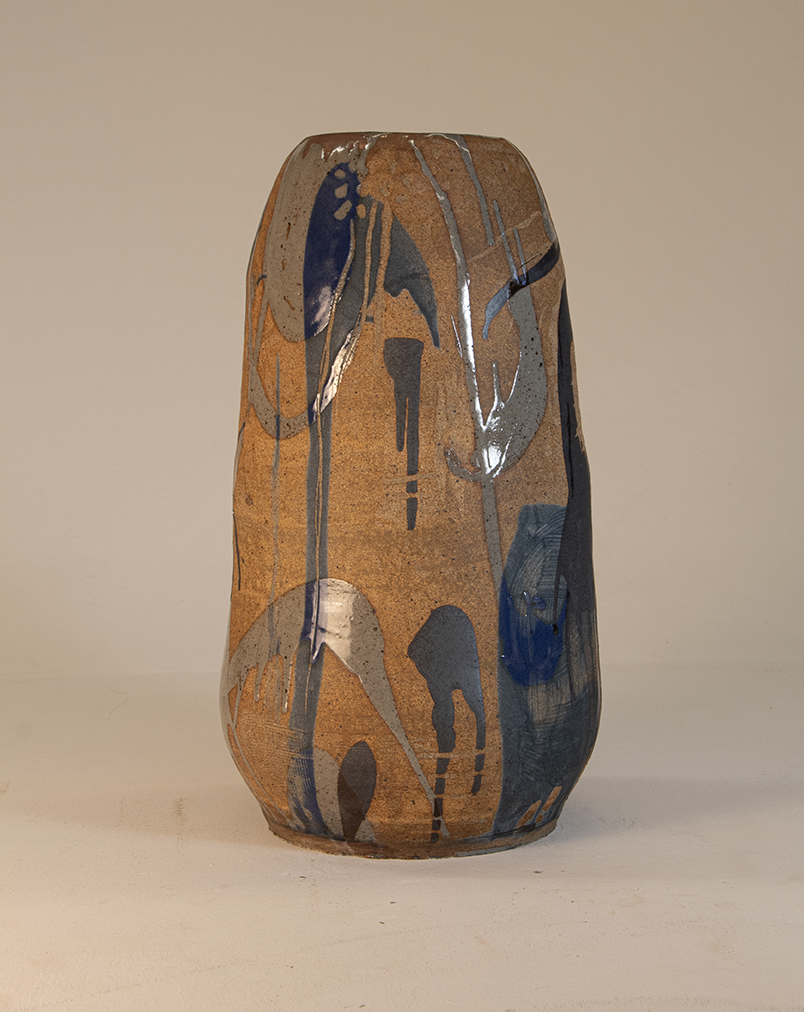
FUNCTIONAL JAZZ
Artist Statement
The ceramic collection, Functional Jazz, explores the relationship between restraint and improvisation. It is largely inspired by live jazz⸺ improvisation within a set of standards that requires the artist to harness a unique intuition for consonance, dissonance, rhythm, and rest. Utilizing the potter's wheel and the Korean technique of Onggi, I create both small and large canvases of unassuming forms. After I have my canvas, I use slip, carving, and minimal glaze to improvise through the surface decoration of my work. The restraint in my work takes the form of an order of operations and knowing when to stop. Ultimately, through harnessing an intuition similar to that of a jazz musician, I create with attention to balancing: restraint and improvisation; consonance and dissonance; rhythm and rest.
The result is Functional Jazz— ceramics with a musical sensibility about them.
THE STORY OF FUNCTIONAL JAZZ
Unknowingly, I began the first generation of this project in the spring of 2024. I had finally returned to the potter’s wheel after an extended hiatus and was experimenting with surface decoration through layering colored slips, glaze pours, and carving designs into the slip. At the end of that semester, I saw a musicality worth pursuing in the body of work I produced.
The next fall, I took an independent study to explore these techniques and create dimension within the surface of my work. That time produced the second generation of Functional Jazz, which was quite consequential in moving my work forward. During a spirited critique with Hoyt Barringer, Ace Lehner, and Steve Buddington, we spoke about which pieces from the collection were the most successful and why— what made them work? As it turned out, it was restraint in surface design and space for visual rest so my designs could breathe.
The spring of 2025, I knew I needed to create larger forms to give my surface design space to breathe, so I began my journey of learning how to utilize the Korean technique of Onggi to create larger pots. My professor, Hoyt Barringer, had extensive experience working with this technique apprenticing under an Onggi legend— Toshiko Takaezu. I am so grateful to Hoyt and his wealth of knowledge on the method. Over the semester, he taught me to use the paddle and anvil to create bigger and bigger pots. We investigated my failures for lessons and celebrated my successes. The practice of Onggi takes patience, precision, and balance. I became obsessed.
With more room for my designs, I saw my work transformed and saw it opened up to new possibilities. By some happy accident, I stumbled into the work of Maria Martinez which inspired me to burnish lines into the surface of my pieces with the back of a spoon. This created more dimension in the naked clay body. Further, I kept refining my work by restraining my use of colored slip and glaze. Even more, I felt my intuition around carving strengthen and it became easier to know when to make a mark. Overall, I am incredibly proud of Generation III and am excited to implement the lessons it taught me into the next generation of work.


